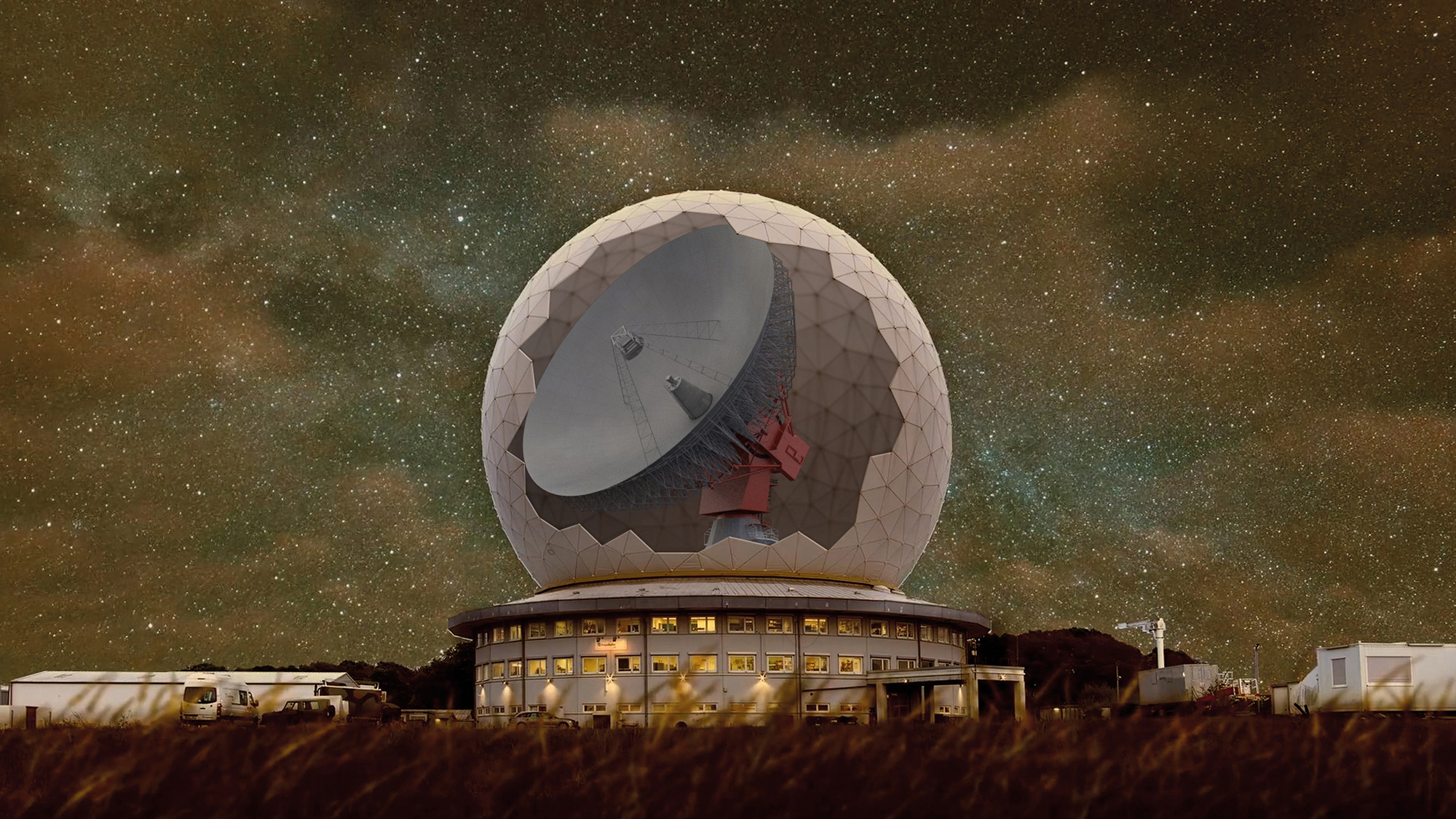Space debris under the spotlight: High- Precision orbit determination with TIRA
Is a piece of space debris threatening to collide with a satellite? This question is essential for satellite operators. The more accurately they know the orbits of these pieces, the fewer evasive maneuvers are required for the satellite – and the longer the satellite can be used. The space observation radar TIRA is capable of very accurately measuring the orbits of these objects.

Internet, communications, navigation systems – a major part of our information infrastructure depends on satellites. However, these are constantly exposed to danger in space: If, for example, a screw with a size of one centimeter was to crash into a satellite, this would have the destructive effect of a hand grenade. This is due to the high relative speed between space objects: up to 15 km/s for objects in low Earth orbits.
There are approximately 750,000 objects in near-Earth orbits that represent a potential danger for active satellites. Less than 30,000 of these objects are continuously being monitored by the US Space Surveillance Network (SSN), with their orbits being continuously updated. In case of an imminent collision, the satellite operator usually requests additional observations. When the probability of a collision is high, evasive maneuvers will be executed. But this requires a lot of fuel – if the satellite has to do this frequently, its lifetime is reduced, so this involves high costs.
High-Precision Orbit Measurements of Space Objects
Fraunhofer FHR's space observation radar TIRA combines a target tracking radar and an imaging radar with a highly agile 34-meter parabolic antenna. Usually, only the target tracking radar is used to determine the orbit of space objects. A new method has now been developed in the EU project EUSST to measure these objects even more accurately. This was achieved by fusing the data of TIRA's two radars using highly complex mathematical methods. The proof of concept has already been provided by observing reference satellites in a joint measuring campaign together with the Space Situational Awareness Center. The data obtained in this manner by TIRA were compared to highly accurate ephemerides. In the process, the distance measurement was improved by a factor of about 100.
The aim until the end of the project, i. e. until the end of 2021, is to refine these mathematical methods. An improved atmospheric model is also necessary to compensate wave propagation effects more accurately. By the end of the project duration, TIRA will have a new experimental mode that can then be used for special contract measurements.